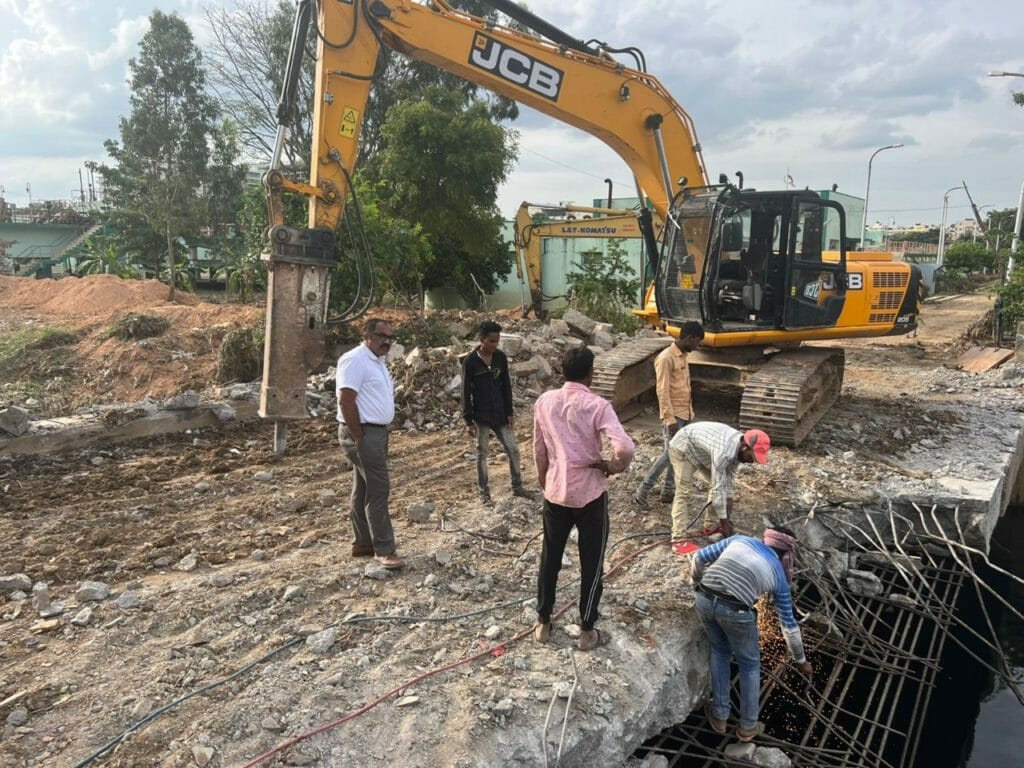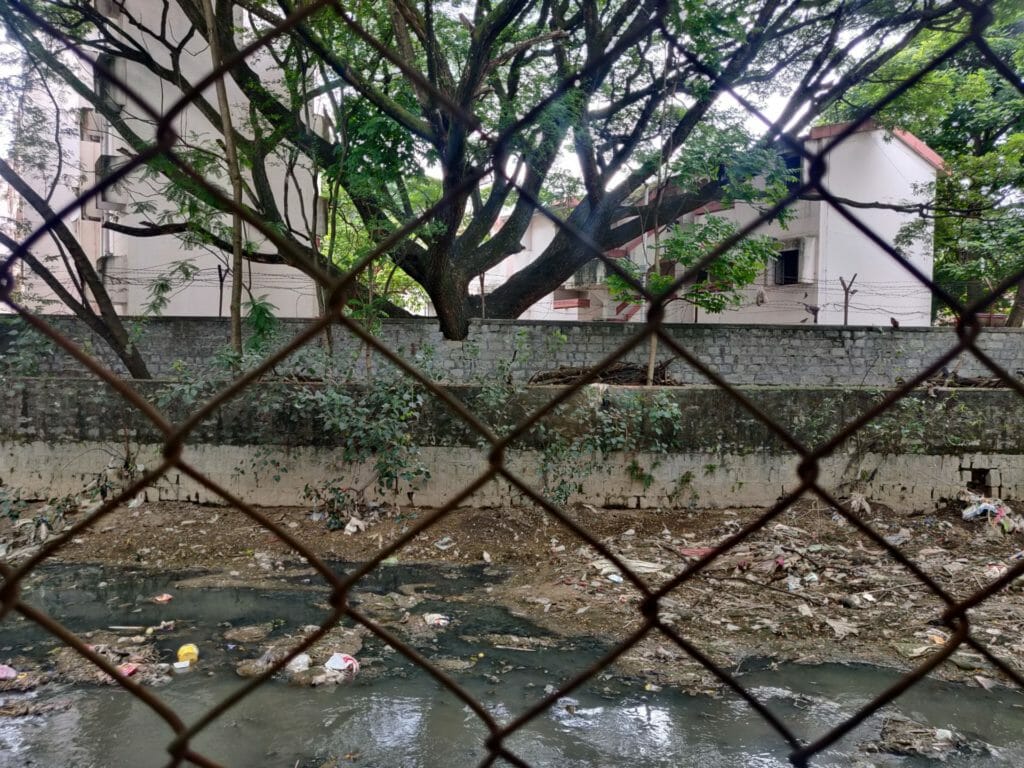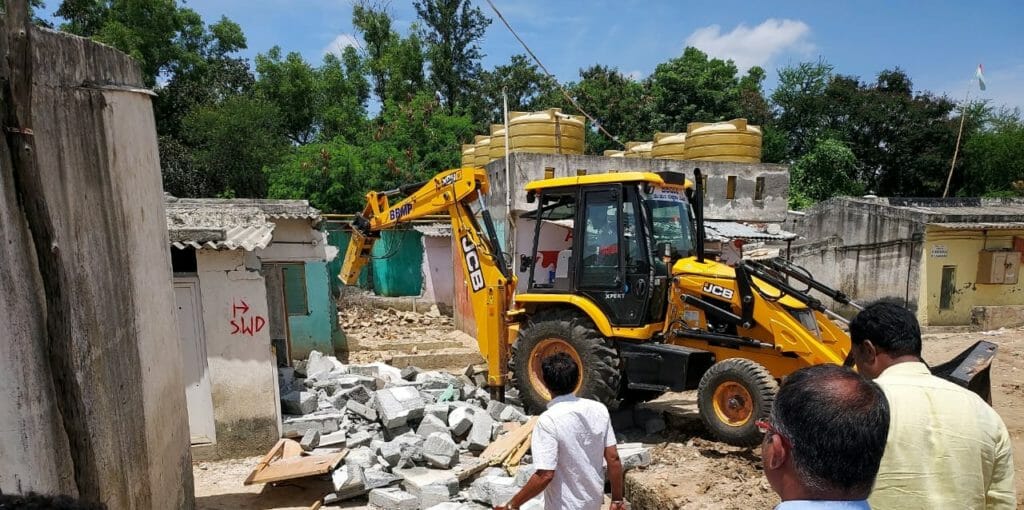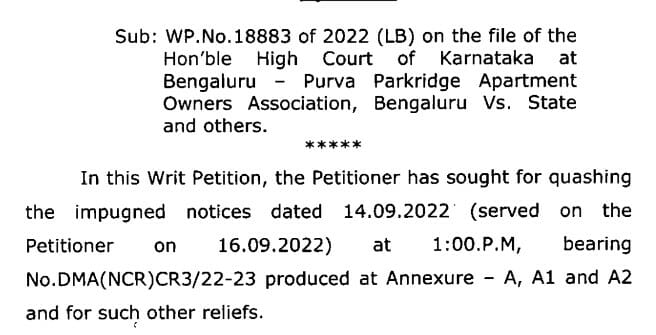On September 22nd, a one-storied building built over a stormwater drain (SWD) or rajakaluves at Shanti Niketan Layout near Munnenakolalu was demolished. The residents were served notice by the tehsildar of the Revenue Department to vacate the house immediately, following which, the structure was razed by the Bruhat Bengaluru Mahanagara Palike (BBMP) and the drains cleared of the debris.

The city’s collective anger over the recent flooding of residential layouts and damage to property finally led to the municipal body scrambling to clear all constructions that encroached the rajakaluves. This exercise started after the rains subsided and the BBMP was tasked with earmarking all such encroachments across the city.
The Bellandur segment in Mahadevapura constituency, one of the areas that faced significant flooding, is seeing the civic body embarking on a demolition spree to clear encroachments. “They marked the route of the SWD in red paint, and where possible, they began demolition,” reports said.

Across Bangalore, there are 2626 cases of stormwater drain encroachment and currently, 627 have been marked for demolition. Karnataka IT Minister C N Ashwathnarayan had mentioned how only Bengaluru West and Dasarahalli zones remained free from waterlogging. While Bommanahalli experienced water logging in nine areas, Bengaluru East and Mahadevapura suffered the worst of the damage as 24 and 28 areas were majorly affected in these zones.
Mahadevapura — the guilty zone
Mahadevpura in fact tops the rankings on number of encroachments, as shown in the land survey data supplied by the BBMP to the Karnataka High Court on September 13the. While 98 of these were removed during the 2016-17 survey, 48 were removed between August and September 2022. However, officials have attested to this data being incomplete and the land survey conducted by BBMP to be only ‘partial.’

The zone houses several tech companies who are allegedly guilty of encroaching on SWDs. Chief Minister Basavaraj Bommai has, however, assured the encroachments will be cleared “without any partisanship” and that officials have been directed to clear all encroachments.
Read more: Beautification in isolation: Questions on the facelift of K-100 Rajakaluve
The BBMP has been clearing the encroachments by enlisting the help of land surveyors, tehsildars of revenue department, marshals and police personnel. As per details provided by an official from the stormwater drain department, until September 12th, in Mahadevapura zone, several compound walls in Chinnapanahalli, Challaghatta villages, Munnekollal and Shantiniketan Layout were removed. In areas with vacant lands, heaps of mud which restrict the flow of the drain are also being cleared.

“We started clearing the encroachments after the rains stopped,” says Munireddy D M, chief engineer for the zone. “There’s a canal passing through the properties of Puravankara and Bagmane tech park. We cleared some constructions on September 19th to ensure its flow. Tech parks and residential complexes are equal defaulters when it comes to encroachments”.
Tech companies in the area are also taking the initiative to remove construction within their premises that are hindering the kaluves. In a statement, software giant Wipro informed that the company has opened a part of the compound wall in their Doddakannelli campus to help BBMP increase the SWD capacity.
A representative from the Outer Ring Road Companies Association (ORRCA) informed that Bagmane Tech Park has voluntarily begun demolition within their Word Technology Centre premises, located in Garudacharapalya in Mahadevapura. “A slab installed on the 80 meter long rain gutter on the east and west side of the Bagmane premises will be cleared by the Bagmane Tech Park itself” said a mass Whatsapp broadcast to all media agencies from the BBMP Public Relations Office.
Demolitions to go on
An official of the SWD department says while clearing of encroachments is in progress, it is taking time as people have obtained stay orders for their properties. “For instance, in Marathahalli’s Chinnapanahalli, there is a writ petition that restrains BBMP from removing the encroachments, hence we cannot say by when the exercise will be done” said the official. I had personally visited this official who while giving me the data explicitly told me to just mention just BBMP official. Several other residents have also armed themselves with petitions to obtain stays on the demolitions on their properties.

Identifying encroachments which field officials have to clear is an arduous task in itself. “We have detailed survey maps which contain details or every revenue village” said an official from the land survey department, who did not wish to be named. But these maps and documents are as per the revenue villages in the Bengaluru urban district, thus information specific to BBMP wards or zones cannot be extrapolated.

The land surveyors measure how much of the drain is encroached and mark how much of it has to be cleared, Munireddy says. The marking is carried out for every village as per the survey number associated with it and the area of land can vary anywhere between five to 10 guntas.
Kharab refers to government land which consist of kaluves, rajakaluves, roads, etc. “So when the field surveyors have to mark encroachments, they ask us what all areas contain kharab, we check our records and inform them” says Munireddy. “Because the city has a lot of built-up area, this exercise cannot be carried out at in one go. We take it per revenue village and assign two surveyors go to each of these areas.”
ORR cos want separate municipal zone
A 17-km ORR stretch of the Outer Ring Road falls within this zone, which is home to to at least 700-800 companies, said a representative of the Outer Ring Road Companies Association (ORRCA). And while the majority of them are being co-operative to parts of their premises being cleared, the association is critical of the way the city’s infrastructure is being planned developed.
This has prompted ORRCA and the National Association of Software and Service Companies to present IT Minister Dr Ashwathnarayan with a comprehensive proposal to declare the 17-km ORR stretch and areas adjacent to it, as a separate municipal zone.
This is in response to ORR being “neglected over the last few years with no clear roadmap and execution strategy to revive broken infrastructure along the stretch.” A separate article will look at what a governance model for this separate zone could look like and how viable a solution is it.